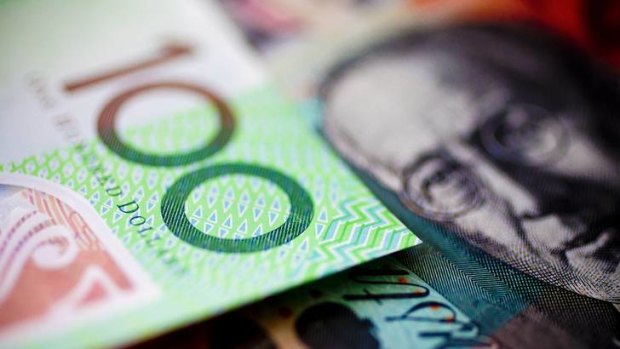The Melbourne Cup day rate decision looks set for a photo finish after the latest batch of economics news further clouded the picture on the health of the national economy.
Currently only 52 per cent of investors foresee the RBA cutting the cash rates to stimulate a soft national economy. But a majority of economists, 20 out of 27, think the RBA will lop 25 basis points from official rates at tomorrow's meeting. And then there's history: the RBA has changed rates in every November in the past six years.
A series of economics releases today has failed to make the picture any clearer.
Mixed messages

Will the RBA cut rates again this Melbourne Cup day? Investors and economists are divided.Credit: Glenn Hunt
A forward-looking indicator of the jobs market released today, the ANZ Job ads index, fell 4.6 per cent in October from a 2.8 per cent decline in September. It was the index's seventh monthly fall.
"This continuing upward pressure on the unemployment rate will see the RBA cut interest rates further," said ANZ head of Australian economics and property research Ivan Colhoun.
"While we pushed back our previous expectation of the next rate cut to December after the higher-than-expected third quarter CPI, a move on Melbourne Cup Day would not surprise."
Meanwhile, an unofficial monthly inflation gauge, the TD Securities inflation index, increased 0.1 per cent in October, from 0.2 per cent in September. In the year to October, it rose 2.4 per cent, well within the 2-3 per cent inflation target held by the RBA. That provides no real barrier to a rate cut.
Also out today, new data showed retail spending rose 0.5 per cent in September, slightly ahead of expectations, but the gain wasn’t strong enough to prevent a dip in spending for the whole third quarter, which fell by 0.1 per cent due to weakness in July.
That mixed result that did little to change divided opinions over whether interest rates will be cut this week.
In time for Christmas
"If you want to have an impact on Christmas spending you have to move in November," said Macquarie senior economist Brian Redican. Since the RBA has no scheduled meeting in January, Mr Redican said November was "a more important time to think about what the economy needs, going into 2013".
The RBA cut the cash rate by 25 basis points last month, taking official rates to a near-GFC low of 3.25 per cent in a bid boost the slowing economy. Fragile sentiment among consumers and business and a patchy domestic economy add to the reasons for another cut this month.
Tight-fisted banks
Since November last year, the RBA has cut 150 basis points from the cash rate, while the major banks have passed along only about 115 basis points to customers.
Last month, the major banks passed along between 18 and 20 basis points of mortgage rate reductions to customers. A 25 basis point cut, if passed along in full, would reduce the average monthly repayment cost by about $48 a month on a $300,000 loan over 25 years.
The banks' profitability has come back into the public's attention after Westpac this morning, flagged a cash profit of $6.598 billion, up five per cent. This year, the big four banks have earned a combined $25 billion in profits, even as consumer confidence has wavered and the borrowing for homes has slowed to a 35-year low.
Inflation concerns
But inflation is one factor which could keep the RBA from cutting rates. The most recent official data on inflation - upon which the RBA typically sets policy - showed prices rising faster than expected in the September quarter, thanks in part to the newly implemented carbon tax. When the Australian Bureau of Statistics released the data on October 24, it showed quarterly inflation rising 1.4 per cent in the September quarter, from 0.5 per cent in the June quarter.
Annette Beacher head of Asia-Pacific research at TD Securities said the "unexpected pop" in underlying inflation in the ABS data took the urgency out of a near-term interest rate cut.
"Combined with stability in global markets, a bounce in iron ore prices and better activity and survey data from number one trading partner China in recent weeks, (the inflation numbers) add to the case for 'wait and see' at the RBA Board meeting tomorrow,” said Ms Beacher.